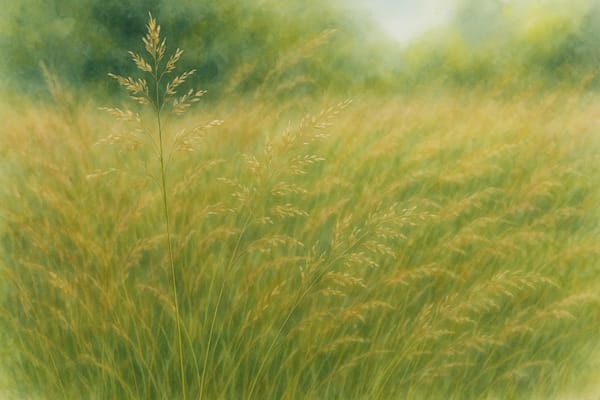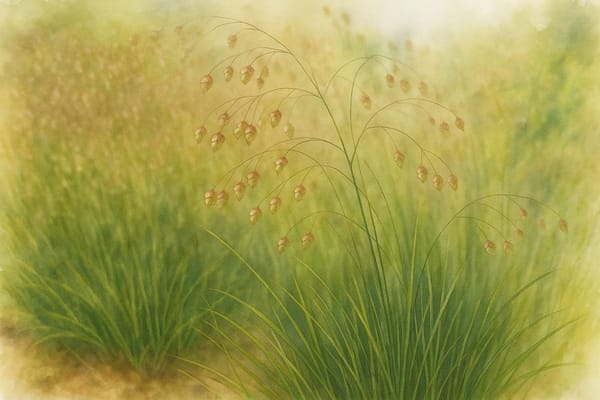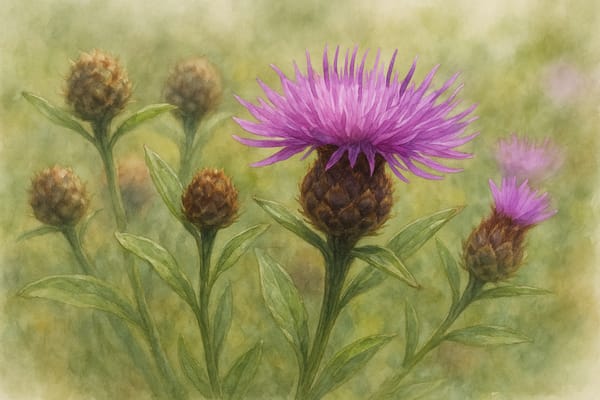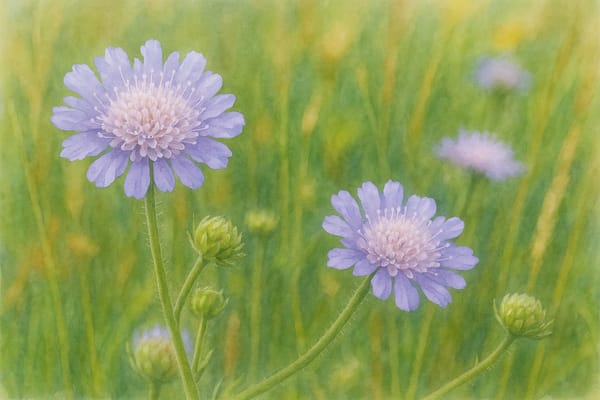On the wind-blown moors, in the wet hush of valley pastures, along hedgerow bases and coastal grasslands, there is a grass that rarely speaks loudly but always stays close. The bents—members of the genus Agrostis—are Cornwall’s quiet architects. They stitch the land’s textures together, binding its soils, feeding its ecosystems, and framing its garden and field in a fine, understated weave.
A World of Fine Threads
The genus Agrostis is nearly global in reach, found in every inhabited continent and thriving in climates from boreal to temperate. Yet in Cornwall, these grasses find a particularly expressive palette. Here, species like Common Bent (Agrostis capillaris), Creeping Bent (A. stolonifera), Velvet Bent (A. canina), and Bristle Bent (A. curtisii) become the backbone of acid grasslands, moorlands, and meadows—ecotypes that define the region’s wilder garden spirit.
They are not showy grasses. No dramatic seed heads or architectural blades. Their strength lies in their texture—fine, hairless leaves that whisper through fingers, and flowerheads that float like mist above the sward. Their botanical subtlety masks an ecological tenacity. Tolerant of trampling, resistant to close mowing, and quietly competitive on the poorest soils, Agrostis species are among the most persistent grasses in Cornwall.
The Many Faces of Bent
Each species of Agrostis reveals a slightly different affinity with place:
- Common Bent (Agrostis capillaris), a quintessential grass of poor upland pasture and acidic meadow, creates loose, airy panicles in summer, casting a reddish haze above moor and heath. It forms neat tufts and, despite its visual delicacy, endures heavy grazing and low fertility with quiet resolve.
- Creeping Bent (A. stolonifera), in contrast, stretches along the ground on stolons—rooting stems that allow it to spread and colonise damp or disturbed land. It thrives in the wet margins of streams and marshes, as well as in the managed geometry of golf greens. Its tolerance of low mowing and its ability to recover from wear make it a turfgrass of international renown.
- Velvet Bent (A. canina) prefers the saturated quiet of woodland edge and boggy pasture. It is finely textured, soft to the touch, and often found on acid soils in shaded environments. Its name conjures its texture well, though its presence is more humble than ornamental.
- Bristle Bent (A. curtisii), more limited in distribution, is especially at home on the Lizard Peninsula, where it co-dominates with western gorse (Ulex gallii) in dry heath. It is a key character in some of Cornwall’s most botanically valuable low-nutrient habitats.
To distinguish them is a challenge for the keen eye: ligule length, leaf shape, and subtle variations in flower structure separate one from another. But in the field, their ecological preferences often say as much as their morphology.
Agrostis in the Cornish Landscape
In Cornwall, Agrostis species are woven into every level of the living landscape:
- On acid moorland and heath, they mingle with heather, gorse, and tormentil, creating swards that ripple in the sea wind. These are places where soil is poor, yet floristically rich, and where traditional grazing patterns once kept coarse competitors at bay.
- In wet meadows and rush pastures, A. stolonifera spreads in dense mats, its creeping stems rooting into saturated soil where little else can take hold. It knits together waterlogged ground and offers a base for orchids, sedges, and the delicate scatter of Cornish eyebrights.
- Along arable margins, disturbed paths, and the bases of Cornish hedges, these grasses persist where others fail. They tolerate footfall, shallow rooting, and low nutrient loads. Here they act as repairers—colonising the overlooked spaces and laying down soft resilience.
- In semi-natural meadows, particularly those left unfertilised or lightly grazed, Agrostis capillaris plays host to extraordinary diversity. It leaves space for wildflowers: knapweed, yarrow, selfheal, bedstraw. Where the sward is fine, the flowers can breathe.
And even in managed gardens, particularly those seeking a wilder, more resilient aesthetic, bentgrasses offer possibilities—either in naturalistic lawns, dry meadow patches, or even green roof planting schemes.
Soil, Acidity, and the Quiet Strength of Bents
Agrostis species are remarkably tolerant of acidic conditions. In soils where other grasses falter—where pH dips below 5, where nutrients are low, or heavy metals from former mining ventures persist—bents endure. They are not nutrient-hungry. In fact, adding too much fertility, particularly in acid soils, can lead to a decline in their density and an invasion by ranker species.
In the Cornish context, this acid resilience allows them to dominate in places others abandon. On serpentine soils of the Lizard, on post-industrial spoil heaps, and in centuries-old pastureland never subjected to fertiliser or plough.
Their roots are fine and fibrous, enhancing soil structure, supporting invertebrates, and anchoring carbon. In the subtleties of soil microbiota, Agrostis species are stabilisers—holding fast a structure that supports entire webs of underground life.
Ecology: An Architecture of Coexistence
What makes Agrostis spp. so valuable in conservation is not merely their persistence, but their willingness to share space. Unlike competitive ryegrasses or coarse tussock-formers, bentgrasses create an open-textured sward. This allows other plants—wild thyme, mouse-ear hawkweed, violets, clovers—to flourish.
Where they dominate in the right balance, over 25 species may be recorded in just four square metres. They provide structure for insects, perches for spiders, and egg-laying ground for butterflies. They are key for solitary bees and hoverflies and play a quiet role in the lifecycle of birds and mammals who rely on those insects in turn.
In Cornwall’s County Wildlife Sites and nature-rich grasslands, their presence is a biological signature—an indication that this is a place of continuity, of light-handed management, of species still holding on.
Agrostis and the Garden of the Future
In the private garden, Agrostis may not be the first genus that comes to mind. But for those looking to cultivate the essence of a Cornish landscape—particularly one drawn from meadow, heath, or bog—it is essential. In ecological restoration, it is among the first grasses to sow, for both soil security and diversity support.
A designer might consider Agrostis capillaris in wild lawn mixes where fine texture and flowering are desired. For gardens influenced by wetland edges or flowing naturalistic schemes, A. stolonifera may be used for ground cover. The trick is to work with its subtleties, to understand its ecological position—not to overfeed, not to over-control.
In Cornwall, where climate, soil, and history combine into one of the most botanically expressive counties in Britain, Agrostis is a quiet ally. It is the warp thread in the weaving—the one that holds pattern even when the world outside the garden changes.











